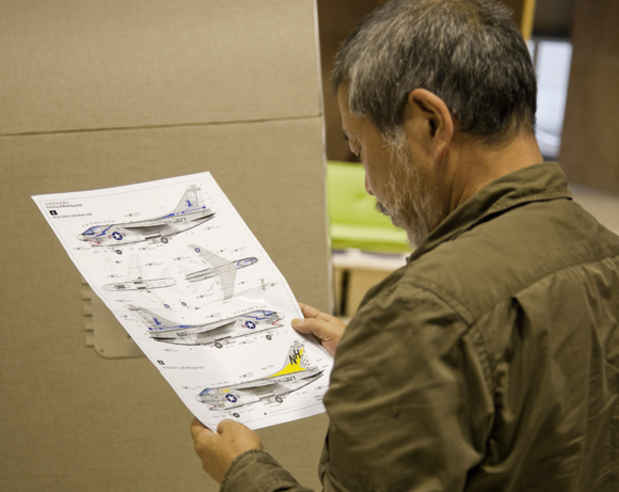Noriyuki Haraguchi "Works from Yokosuka"
Fergus McCaffrey

This event has ended.
McCaffrey Fine Art presenst its first solo exhibition of the work of Noriyuki Haraguchi. On the occasion of this exhibition, "Works from Yokosuka", the artist has constructed a full-scale replica of the tail of a US Navy A-7E Corsair II jet, created from raw stretched canvas, aluminum, and plywood. This monumental sculpture will be shown in conjunction with a selection of works that he created between 1963 and 1972.
Noriyuki Haraguchi first came to prominence in the late 1960s, developing paintings and sculptures that engaged with cultural and environmental issues through a post-minimalist vocabulary. The artist was born in 1946 and raised in the town of Yokosuka, the home port of the US Navy's 7th Fleet since the end of hostilities in 1945. Yokosuka's large sailor population has made it a flash point in cultural relations between Japan and the United States. It was also the primary Japanese naval base from which the Vietnam War was fought, which incited antiwar and pro-pacifist protests in Japan.
In November 1968, while Haraguchi was still a student at Nihon University, Tokyo, riots broke out at the university in protest against the war in Vietnam, the presence of US military on Japanese soil, and the Japanese-American security treaty (ANPO agreement). An encounter with the exhaust vent and tail of a US Navy jet fighter being transported onto the Yokosuka Navy Base one evening in late 1968 proved decisive in cementing Haraguchi's politically infused minimalist aesthetic and inspired his first magnum opus, A-4E Skyhawk (1969). Constructed behind the barricades at Nihon University amid the riots, Haraguchi handcrafted a full-scale plywood reproduction of the tail of the aircraft. He also completed a series of monochrome white Air Pipe constructions (1968–69) of stretched canvas on plywood armatures that resemble jet engine exhausts. The A-4E Skyhawk was exhibited in 1969 in Tokyo before being returned to Nihon University, where it was subsequently destroyed by riot police and the university authorities.
The A-7 E Corsair II jet tail is the fifth sculpture of Vietnam-era American warplanes that Haraguchi has completed since 1968–69. In the exhibition, it will be accompanied by two examples from the Air Pipe series (1969), along with a lacquered paper battleship sculpture from the Ship series (1963–65) and Tsumu 147 (1966), a life-size rendition of the doors of a freight wagon. These works evince an early and acute awareness of the aesthetics of militarism and heavy industry that continues to inspire Haraguchi's distinctive body of work.
Haraguchi's work first came to prominence in the West in 1977 at Documenta, where his Oil Pool sculpture attracted a great deal of attention. Since then, his work has only occasionally been seen in the United States and Europe, most notably at the Lenbachhaus in Munich in 2001. Retrospective exhibitions of his work have recently been held at BankART, Yokohama, Japan, in 2009, and the Yokosuka Museum of Art in 2011.
Media
Schedule
from January 06, 2012 to March 17, 2012